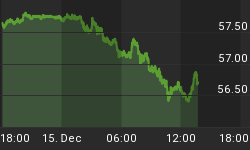The major equity indices have forged a bottom over the past two weeks as the cycle of greed and fear plays out. As expected, investor sentiment has turned neutral. Consequently, short covering is unlikely to be the fuel that propels prices higher, and with the fundamental outlook questionable, it is reasonable to wonder what the fundamental driver will be that propels prices higher. In essence, equity prices will need to rise on their own merit.
The "Dumb Money" indicator (see figure 1) looks for extremes in the data from 4 different groups of investors who historically have been wrong on the market: 1) Investor Intelligence; 2) Market Vane; 3) American Association of Individual Investors; and 4) the put call ratio. The "Dumb Money" indicator has turned neutral this week after turning bearish 3 weeks ago on May 28. If you bought the S&P500 during the "sweet spot" and sold this past Friday, your gain would be 4.94% over the past 2 weeks.
Figure 1. "Dumb Money"/ weekly
The "Smart Money" indicator is shown in figure 2. The "smart money indicator is a composite of the following data: 1) public to specialist short ratio; 2) specialist short to total short ratio; 3) SP100 option traders. The "Smart Money" indicator has turned neutral.
Figure 2. "Smart Money"/weekly
Figure 3 is a weekly chart of the S&P500 with the InsiderScore "entire market" value in the lower panel. From the InsiderScore weekly report we note the same lack of conviction that has plagued this bounce for the prior 2 weeks continues this week.
Figure 3. InsiderScore "Entire Market" Value/ weekly
Figure 4 is a weekly chart of the S&P500. The indicator in the lower panel measures all the assets in the Rydex bullish oriented equity funds divided by the sum of assets in the bullish oriented equity funds plus the assets in the bearish oriented equity funds. When the indicator is green, the value is low and there is fear in the market; this is where market bottoms are forged. When the indicator is red, there is complacency in the market. There are too many bulls and this is when market advances stall.
Currently, the value of the indicator is 46.36%. Values less than 50% are associated with market bottoms.
Figure 4. Rydex Total Bull v. Total Bear/ weekly
Were you buying at the market top? Wondering when to buy the dip?
Improve your market timing with Premium Content from TheTechnicalTake. For a nominal yearly fee, you will get a unique data set that will show you which way investors (i.e., bull market geniuses) are leaning.
It is independent and original market analysis. To view a recent report click: REPORT.
















